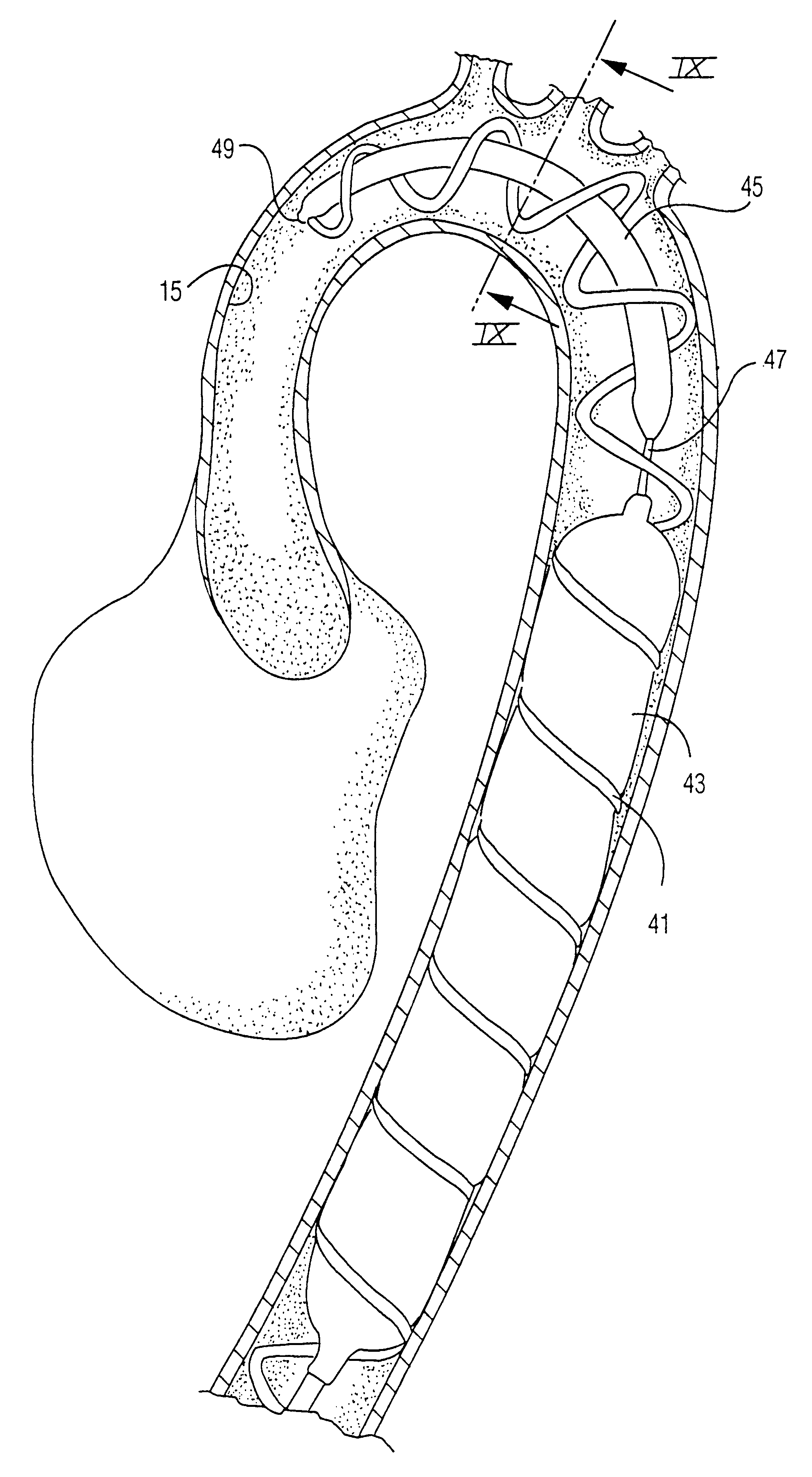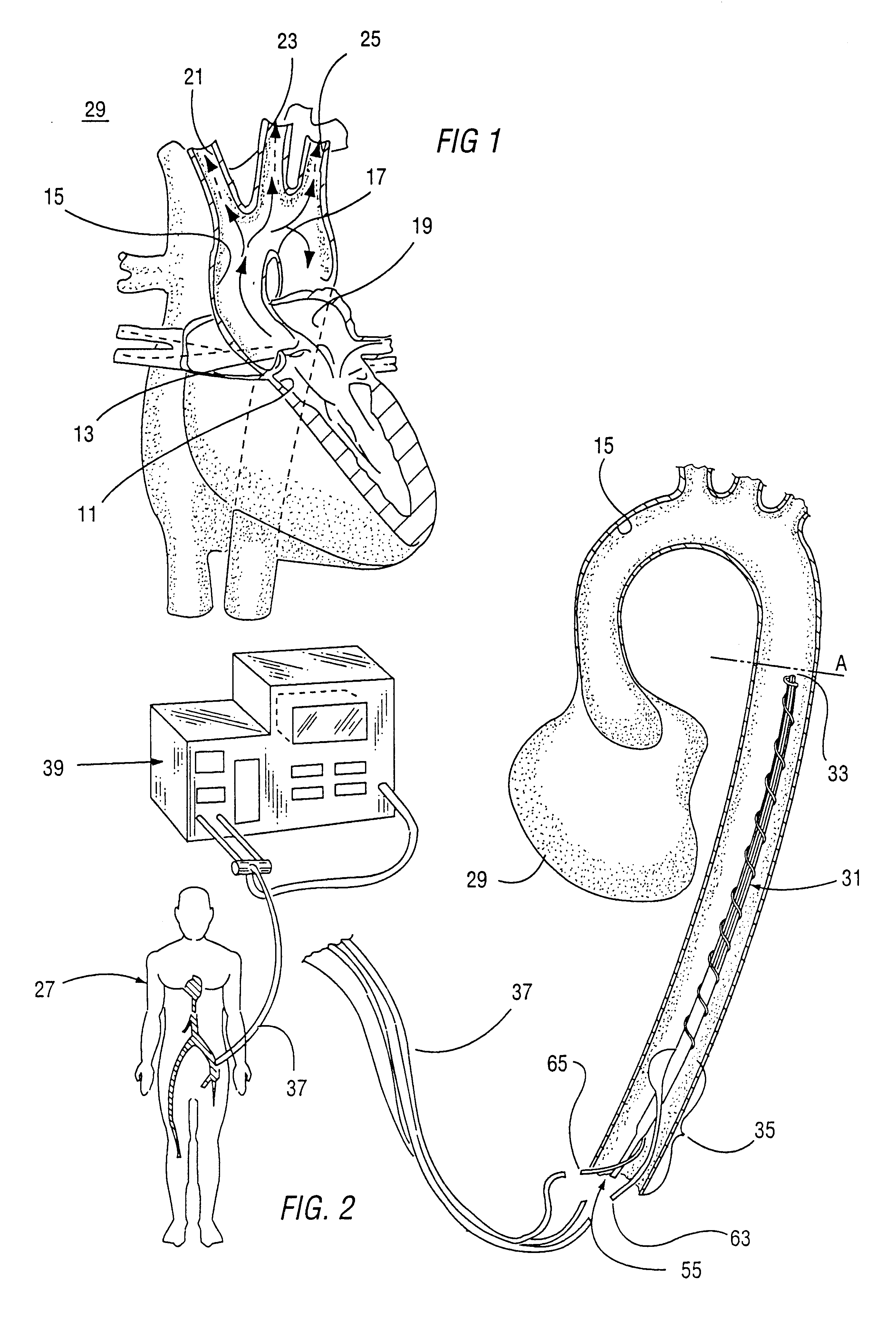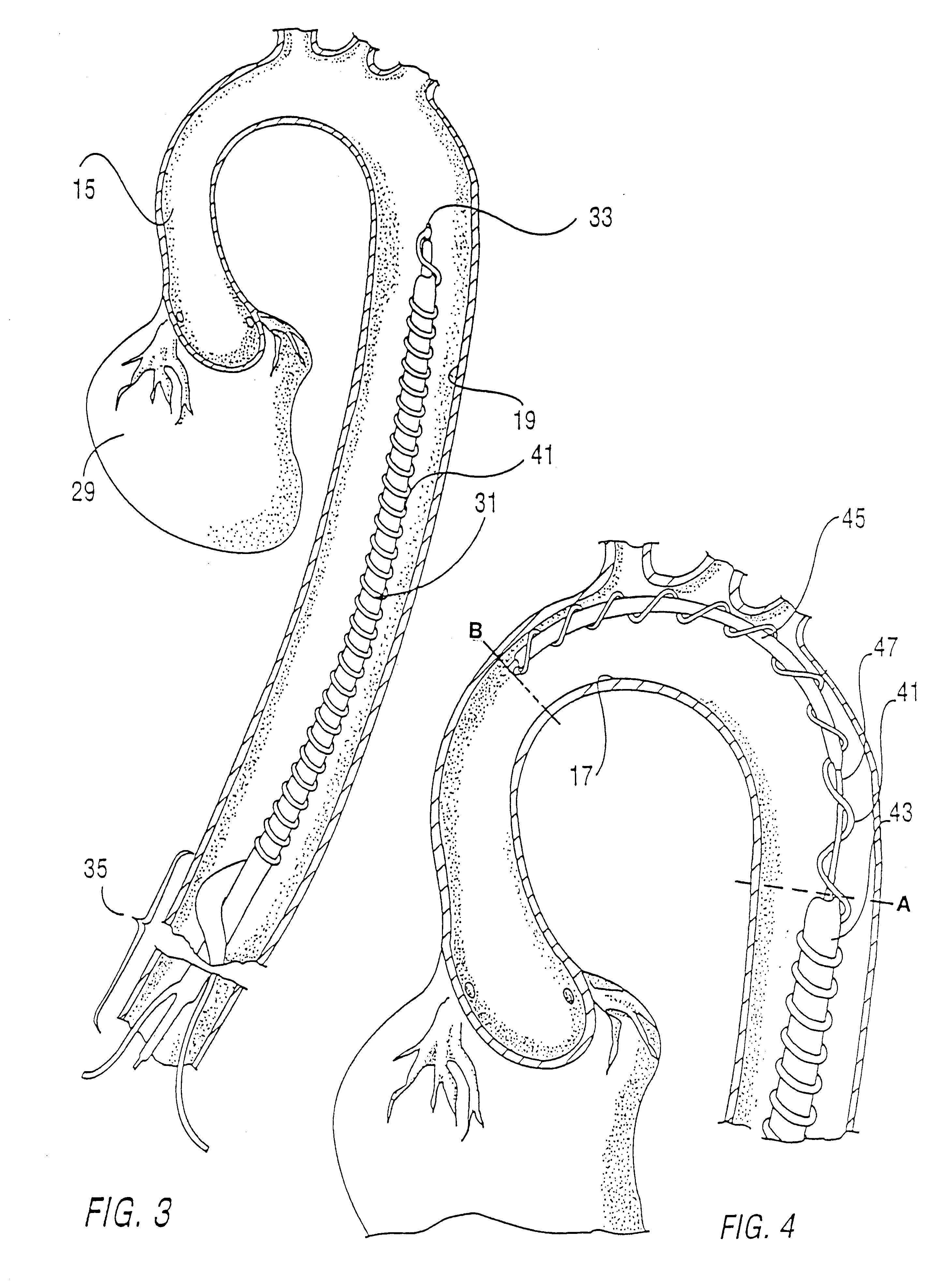Removable left ventricular assist device with an aortic support apparatus
a technology of aortic support apparatus and assist device, which is applied in the direction of prosthesis, blood vessels, therapy, etc., can solve the problems of reduced cardiac output, troublesome problems arising from left ventricle disfunction, and many problems
- Summary
- Abstract
- Description
- Claims
- Application Information
AI Technical Summary
Benefits of technology
Problems solved by technology
Method used
Image
Examples
Embodiment Construction
The present invention provides a dual function. The first is to provide a removable, pressurizable means of support and expansion of the inside walls of the aorta, in particular the aortic arch and descending portions of the aorta. In conjunction with this function, the present invention provides a LVAD using a blood flow control means that can be placed within the aorta simultaneous to and in conjunction with having the support means within the aorta. It is these two functions of the invention that allow its use in the aorta of a patient whose heart condition is such that presently available IABP devices are useless. The dual purpose of the present invention is shown in the preferred embodiment described below.
A partial cutaway view of the human heart 29 is shown in FIG. 1. The left ventricle 11 is where oxygenated blood coming from the lungs is pumped into the body. The aortic valve 13 controls the flow of blood, opening during the systole phase of the heart's cycle and closing du...
PUM
 Login to View More
Login to View More Abstract
Description
Claims
Application Information
 Login to View More
Login to View More - R&D
- Intellectual Property
- Life Sciences
- Materials
- Tech Scout
- Unparalleled Data Quality
- Higher Quality Content
- 60% Fewer Hallucinations
Browse by: Latest US Patents, China's latest patents, Technical Efficacy Thesaurus, Application Domain, Technology Topic, Popular Technical Reports.
© 2025 PatSnap. All rights reserved.Legal|Privacy policy|Modern Slavery Act Transparency Statement|Sitemap|About US| Contact US: help@patsnap.com



